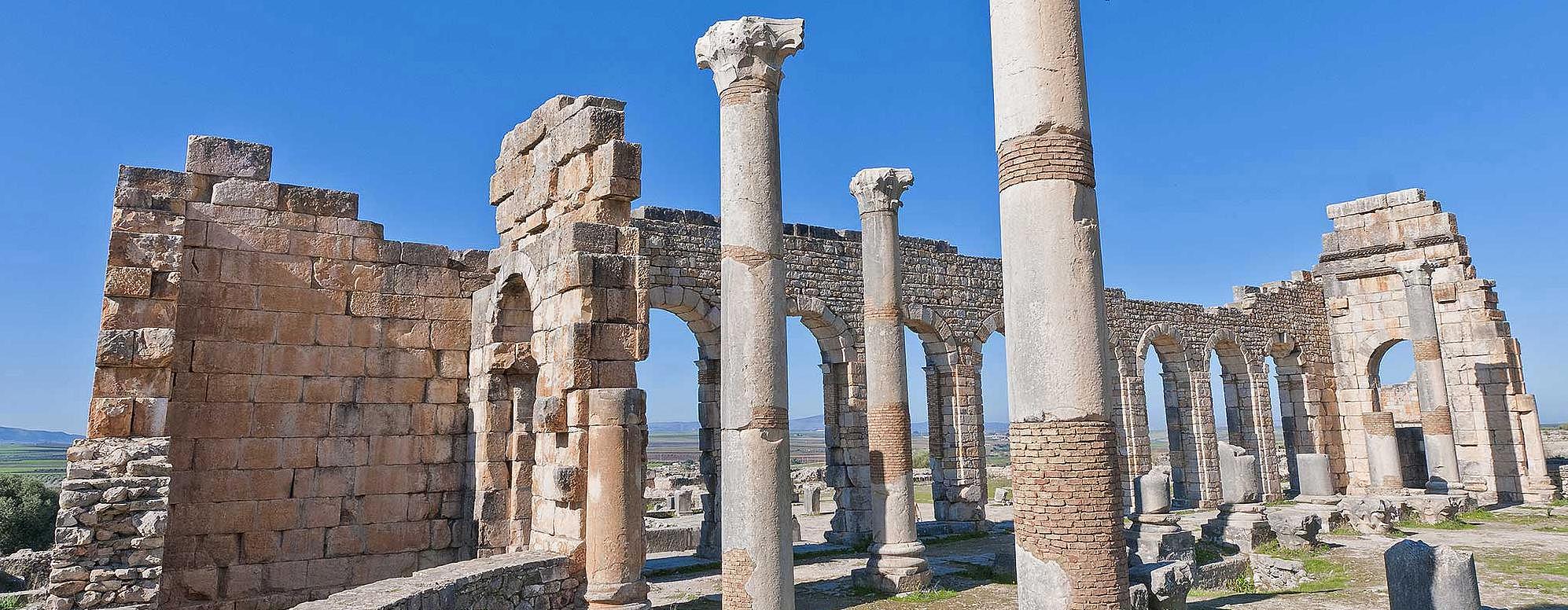Volubilis, the most important Roman ruins in Northern Africa

A bit of history
The city was founded by the Carthaginians in the 3rd century BC under the name Oulili. Not much is known about it during this period, but we do know it belonged to the Kingdom of Mauretania. In 40 AD, Mauritania was annexed by the Roman Empire and the city became part of the empire, changing its name to Volubilis.
The city produced olive oil and wheat and over time became the most important city of the province and an administrative centre. This prosperity is reflected in the buildings that were built in the city, such as a basilica, a forum and even a triumphal arch.
Around 285 AD, the city lost its importance to the empire because its civil servants moved to another city. This didn’t mean the city was abandoned altogether though, although there were areas which became uninhabited.
In 631, Arabs invaded and installed a garrison. Its importance declined little by little, until Sultan Moulay Ismail dismantled the most important buildings at the beginning of the 18th century to provide building materials for the palaces of Meknès.
It was rediscovered in the 19th century by the French ambassador, and excavations began in 1887.
What to see in volubilis?
The archaeological site occupies around 20 hectares and there is still a lot left to be excavated.
Arriving by road, there is a small entrance where you can buy tickets and hire guides. The visit takes about 1.5 hours.
The moment you enter you'll find yourself in an outdoor museum of ruins and sculptures. They are not very impressive, since the best-conserved ruins are in the Archaeological Museum in Rabat.
The most important ruins are those of the basilica, which dates to the 2nd century, the forum, the Temple of Jupiter Capitolinus and the Triumphal Arch of Caracalla. The basilica, with its four lines of columns and two naves, served as a stock exchange building and courthouse of the city and the forum is decorated with statues of Roman emperors and notable figures of the time.
There are also ruins of the Baths of Gallienus, as well as the olive oil mills, where olive oil was produced which enriched the region.
The best-preserved ruin is the main street, Decumanus Maximus, which ends at the Triumphal Arch of Caracalla. The paving has been preserved and it is surrounded by large houses decorated with mosaics. The houses offer a vivid glimpse into life in the city and some are very well preserved indeed.
Getting to Volubilis
The trip from Meknès is 30 km, half an hour by car. Take the road towards Kenitra. It is about 90 km from Fez and Rabat.
From the north, leaving from Tangier, Ceuta or Tétouan, there is a turnoff on the northbound road to Meknès, and from there you head to Kenitra.
The route is very well signposted.